July 2022
Frank Hurley (Australian, 1885-1962)
The Battalion
1917-1918
Gelatin silver print
Lawsons title, no text on back of print
Familiar yet strange: Frank Hurley’s First World War photographs
Most texts about the war photographs of Frank Hurley taken on the Western Front that I have read, focus on his use of multiple negatives to construct fantastical images of reportage, ‘Photographic Impression Pictures’ – combination prints – “pictures made to produce a realistic impression of certain events by the combined use of a number of negatives.” Hurley argued that it was impossible to capture the essence of what he saw in a single negative. He observed in the Australasian Photo-Review in 1919:
“None but those who have endeavoured can realise the insurmountable difficulties of portraying a modern battle by the camera. To include the event on a single negative, I have tried and tried, but the results are hopeless … Now, if negatives are taken of all the separate incidents in the action and combined, some idea may then be gained of what a modern battle looks like.”1
“Hurley desperately wanted to convey this horror through his photographs. He took many shots of the apocalyptic battlefields but was not content. While bleak, the stillness and shock of these images failed to communicate the cacophony of war. How was he to visually capture the ‘blinding sheet of flame; and the […] screaming shriek of thousands of shells’?”2
Hurley clashed with the official historian, Captain Charles Bean, about truth and photography. Bean was not convinced on the use of multiple negatives and referred to the images as ‘fakes’ but, on threat of resignation, Hurley stood his ground “and was not prepared to compromise for his art nor to fail in his duty to portray the horrors that he witnessed.”
These images formed a very small part of the work that Hurley produced in World War I and none are reproduced in this posting.
Personally I am more interested in Hurley’s “straight” photographs and in observing the minutiae within each image. By doing this we can began to invert Hurley’s idea of capturing the whole event on the battlefield on a combined “macro” multi-negative. What Hurley was actually doing in his ordinary photographs was making possible such a complete record through the accumulation of familiar yet strange “micro” observations on a single negative – creating “atmospheres” of existence that document incidents in the action, which formally work together to picture the whole.
For example in the photograph 48th Battalion awaiting orders to “Hop” in the Big Drive (18th July – 6th November 1917, below), Hurley uses a “near far” perspective, focusing the viewer’s eye along the perspective of the trench to the lone tree, building and standing figure vanishing point in the distance: but in the detail we can observe a man smoking a pipe, two men sewing and, to the right, what looks like a Very Pistol (or flare gun) – heavily used in both world wars – casually lying on a sandbag. The slight blur of the soldiers Brodie Mark I helmet at left indicates the length of the exposure, the physical length of that exposures existence. By observing the minutiae in this image the viewer can enter the space of the image and be fully present with these soldiers.
Other photographs offer more intriguing details that contribute to make the whole “picture” of the battlefield. Showing the cacophony and detritus of war, Australians Waiting to “go over” Passchendaele (18th July – 6th November 1917, below) also shows in the misty background the silhouette of one of those new fangled tanks that were making an appearance on the battlefield, probably knocked out or broken down as they usually were. In the photograph incorrectly titled by Lawsons, ‘Australians Waiting to “Go Over”‘ – its correct title being Members of the 13th Australian Field Ambulance at Passchendaele (1917, below) – we can observe a man holding a gas mask in his left hand; canisters of water and other belongings hanging from metal rods banged into the mud of the face of the trench; a big wooden stretcher standing vertically in the trench; and two of the men wearing an armband brassard with the words SB on them, indicating these men were stretcher bearers. Again, in the minutiae of elements, of detail, Hurley creates direct access to an “atmosphere” of the battlefield in all its dourness, mud and hollow-eyed soldiers staring grimly at the camera.
In the photograph Crew of 2 Gun, Royal Marine Artillery loading ‘Granny’, a 15 inch Howitzer (heavy artillery gun), near the Menin Road (4 October 1917, below), Hurley captures the balletic dance required to load a monster, death dealing gun… the heavy shells manoeuvred over to the gun with a chain and pulley rigged up beside the gun pit. Reminiscent of the group portraits of Rembrandt with their “dramatic use of light and shadow (tenebrism) and the perception of motion in what would have traditionally been a static military group portrait,”3 Hurley’s photograph features three acolytes with their heads bowed at right whilst in the centre three seemingly kneeling figures raise their eyes as if in a devotional Renaissance painting to observe Christ being raised, pulled by chains onto the cross which is suspended above them.
In Hurley’s observations of the world – quick, fleeting glances of destruction, not long fixed stares – we look, recognise and feel his need to recognise his objective… before we need to verbalise our objective, ‘clear-sighted’, unbiased ‘views’ of the subject matter. In Australian wounded on the Menin Road, near Birr Cross Road on September 20th, 1917 (September 20th, 1917, below), Hurley’s glass plate has cracked much like the world he was photographing. Clutching a blanket, a man on a stretcher in the foreground turns to look at the camera(man) while next to him a sergeant put his hand to his head. To his left another man is covered with a blanket so that we can only see his face from the nose upwards but we can observe he is staring towards the camera. Behind these grounded men is a maelstrom of movement picturing the violent turmoil of war – abandoned stretchers to the right; an upended lorry perched precariously at an angle; and walking wounded trudging past the seemingly endless line of injured and dead lying on the side of a muddy road in a decimated landscape. This photograph is but a tiny grain of sand on the head of a pin, here and then gone, for soon after Major George Heydon (the man in the sling in the centre of the photograph) had passed this point “a shell landed at that same spot killing many of the men on the stretchers.”4 Life recorded and then snuffed out, both in less than a second.
Hurley need not have worried about capturing the macro, the whole of any event, for this is an impossible task with any still camera. By it’s very nature the camera excludes whatever is outside its direct line of sight, its point of view… so it is always exclusory. But in freezing the micro/cosmos within any photograph what Hurley captures are intriguing, fleeting “atmospheres” where the contexts and conditions for creation have brought together disparate elements to create a visual whole, in this case a dance of death.
In my mind, Hurley’s war photographs are much like the later English photographer Bill Brandt’s landscape photographs. Despite the difference in subject matter, my feeling is that both Brandt and Hurley were trying to display a sublime aesthetic. Whereas Hurley wanted to capture the intensity of the battlefield and its death and despair in one intimate, sublime image – here using sublime in the archaic sense of wanting to elevate something to a high degree of moral or spiritual purity or excellence – Brandt wanted to capture the archaic sublime beauty of the landscape. Brandt attempted to do this by introducing “an atmosphere that connects with the viewer in order to provoke an emotional response from contemplation of the work. In this sense it would seem that Brandt did not merely aim to represent a place but to capture its very essence in a single image…”5 The very thing that Hurley stated he wanted to do, to give some idea of what a modern battle looks and feels like in a single negative. Brandt stated, “Thus it was I found atmosphere to be the spell that charged the commonplace with beauty. … I only know it is a combination of elements … which reveals the subject as familiar and yet strange.”6
To photograph these minutiae is not simply to document but to (e)strange through a heightened sense of atmosphere. A combination of elements … which reveals the subject as familiar and yet strange: Isn’t that what Hurley’s war photographs are?
Hurley’s photographs contain a familiar yet strange “atmosphere” at once both objective but truly immersive and subjective (we can “picture” ourselves there) – in which the different elements that make the landscape (nature, light, viewpoint, weather conditions, subject, context) converge in an aesthetic canon rooted in a cultural tradition – in this case, war and war photography.
Dr Marcus Bunyan
Word count: 1,450
Footnotes
1/ Australasian Photo-Review, 15 Feb, 1919, p. 164
2/ Anonymous. “Frank Hurley’s World War I photography,” on the State Library of New South Wales website Nd [Online] Cited 28/07/2022
3/ Anonymous. “The Night Watch,” on the Wikipedia website [Online] Cited 28/07/2022
4/ Anonymous. “AWM E00711,” on the Australian War Memorial website Nd [Online] Cited 27/03/2022
5/ Anonymous. “Bill Brandt” text for the exhibition of the same name at the Fundación Mapfre, Madrid quoted on the Art Blart website 22nd August 2021 [Online] Cited 28/07/2022
6/ Ibid.,
These photographs appeared on the Lawsons Auctioneers, Sydney website and are published here under fair use conditions for the purpose of education and research. I have added pertinent information with each photograph where possible. Each photograph has been lightly digitally cleaned. Please click on the photographs for a larger version of the image.
“What an awful scene of desolation! Everything has been swept away: only stumps of trees stick up here & there […] It’s the most awful & appalling sight I have ever seen. The exaggerated machinations of hell are here typified. Everywhere the ground is littered with bits of guns, bayonets, shells & men. Way down in one of these mine craters was an awful sight. There lay three hideous, almost skeleton decomposed fragments of corpses of German gunners. Oh the frightfulness of it all. To think that these fragments were once sweethearts, may be, husbands or loved sons, & this was the end. Almost back again to their native element but terrible. Until my dying day I shall never forget this haunting glimpse down into the mine crater on hill 60.”
Frank Hurley diary entry, 23rd August, 1917
In Flanders Fields
In Flanders fields the poppies blow
Between the crosses, row on row,
That mark our place; and in the sky
The larks, still bravely singing, fly
Scarce heard amid the guns below.We are the Dead. Short days ago
We lived, felt dawn, saw sunset glow,
Loved and were loved, and now we lie,
In Flanders fields.Take up our quarrel with the foe:
To you from failing hands we throw
The torch; be yours to hold it high.
If ye break faith with us who die
We shall not sleep, though poppies grow
In Flanders fields.
John McCrae
James Francis “Frank” Hurley was 30 years old when he joined the Australian Imperial Force as an honorary captain and official photographer.
Before arriving on the Western Front in August 1917 to document the Third Battle of Ypres, Hurley had been no stranger to photographing under risky conditions. Less than one year earlier, he had returned to civilisation after two years stranded on the pack ice of Antarctica with Ernest Shackleton and the crew of the Endurance, a desperate struggle for survival during which he managed to produce a stunning set of images.
Hurley’s commitment to capturing an image, to ‘getting there without a fuss’, as Bean described it, underplays the many difficulties he faced in the field. His daily encounters with death, destruction and the ubiquitous mud of Flanders can only have hampered his photography. Hurley was – perhaps unknowingly – echoing Bean’s impetus to establish a national collection and, in turn, a memorial to Australians at war when he wrote:
“My enthusiasm and keenness, however, to record the hideous things men have to endure urges me on. No monetary considerations, or very few others in fact, would induce any man to flounder in mud to his knees to try and take pictures.”
Frank Hurley, quoted in Daniel O’Keefe, Hurley at War: The Photography and Diaries of Frank Hurley in Two World Wars, Fairfax Library, Sydney, 1986, p. 7 quoted in Susan van Wyk. “The grim duties of France: Frank Hurley and the Exhibition of Enlargements Official War Photographs,” in National Gallery of Victoria Art Journal 51, 26 Jul 13 [Online] Cited 27/03/2022
Frank Hurley (Australian, 1885-1962)
48th Battalion awaiting orders to “Hop” in the Big Drive (recto)
18th July – 6th November 1917
Gelatin silver print
Frank Hurley (Australian, 1885-1962)
48th Battalion awaiting orders to “Hop” in the Big Drive (verso)
18th July – 6th November 1917
Gelatin silver print
Frank Hurley (Australian, 1885-1962)
Australians Waiting to “go over” Passchendaele
18th July – 6th November 1917
Gelatin silver print
Lawsons title, no text on back of print
Notice the silhouette of the tank in the background of the photograph, and at centre right a .303inch Vickers Machine Gun mounted on a tripod (see below)
.303inch Vickers Machine Gun
between 1914 and 1918
Courtesy of York Museums Trust
Creative Commons Attribution-Share Alike 4.0 International
Standard Vickers machine gun with tripod mount and associated ammunition belt, ammunition box plus petrol can (as a condenser can) with hose. The Vickers Gun was the standard British machine gun from 1912. It was heavy and mounted on a tripod, requiring a team of six men to transport it to and operate it on the battlefield. Although difficult to use on advancing troops, machine guns were used to deadly effect from defensive positions.
Text from the Wikipedia website
Frank Hurley (Australian, 1885-1962)
Members of the 13th Australian Field Ambulance at Passchendaele
1917
Gelatin silver print
State Library of Queensland title: Australian Field Ambulance officers sheltering in trench
Imperial War Museum title: Members of the 13th Australian Field Ambulance at Passchendaele © IWM (E(AUS) 839)
Lawsons title: Australians Waiting to “Go Over” (no text on verso of print)
The caption from Lawsons auction house is incorrect. These are not front line troops waiting to “go over” but stretcher bearers as evidenced by the armband on the two men on the left hand side of the photograph and their attendant stretcher vertically propped up against the trench.
“While the soldiers were readying themselves at the front of a trench, awaiting the order to go over the top, the unarmed bearers were at the back with their big wooden stretchers, trying, says Mayhew, to be as invisible as possible because the fighting men often considered them unlucky.”
In a more recent Australian publication Diaries of a Stretcher-Bearer 1916-1918 the Great War experience of Edward Charles Munro is retold. Munro served as an AAMC stretcher-bearer on the Western Front (Edward C. Munro, Donald Munro (ed.), Diaries of a stretcher-bearer: 1916-1918, Boolarong Press, Brisbane, 2010). Munro, awarded the Military Medal for his actions during the Battle of Bullecourt in May 1917, candidly related his involvement and experience in the 5th Australian Field Ambulance. The text gives the reader a clear understanding of the work and wartime experience of an Australian stretcher-bearer on the Western Front and is remarkable for its honesty and detail. The work is unusual as it portrayed the reality of life on the Western Front in a manner few others have done. For example, the author graphically described the technical aspects of the stretcher-bearers’ work in evacuating the wounded and frankly related his personal fears and those of his AAMC stretcher-bearer squad while working in harsh conditions and whilst under fire.
Liana Markovich. “‘No time for tears for the dying’: stretcher-bearers on the Western Front, 1914-1918.” Doctor of Philosophy thesis, University of New South Wales, November 2015, p. 20.
Unknown maker
Armband brassard: Stretcher Bearer, Australian Army – Lance Corporal A Kennedy, 52 Battalion, AIF
c. 1916
Brass, Linen, White metal, Wool
Australian War Memorial Collection
Description
White woollen brassard (arm band), lined with white linen, with a nickel plated metal buckle, and five brass riveted eyelets at the free end for size adjustment. The letters ‘SB’ (stretcher bearer), in fine red wool cloth, are appliqué in the centre. The reverse has the wearer’s initials ‘A.K.’ in indelible pencil.
History / Summary
Alexander Kennedy, born in Glebe, Sydney, was a 20 year old baker working in Brisbane, when he enlisted in the AIF on 27 April 1915. After training he was assigned as a private to the Headquarters of 26 Battalion, with the service number 570.
The battalion sailed for Egypt on 29 June, aboard the troopship HMAT A60 Aenas, and then on to Gallipoli, where they landed on 12 September, undertaking defensive roles on the peninsula. Kennedy suffered what was diagnosed as an epileptic fit on 18 October. After assessment at 16 (British) Casualty Clearing Station, he returned to his unit the following day, but immediately suffered more fits. As a result, he was evacuated to the hospital ship, Soudan, and taken to Malta for treatment. Kennedy returned to duty in Egypt in March 1916 and transferred to D Company, 52 Battalion the following month, as a battalion stretcher bearer.
On 6 June 1916, he sailed with his battalion, aboard the Iverniai, to France for service on the Western Front. On 18 August Kennedy was promoted to lance corporal. In its first action in France, at Mouquet Farm on 3 September, fifty per cent of the men in 52 Battalion became casualties. Kennedy was one of them, receiving gunshot wounds to the shoulder, chest and left thigh, and fractured toes. Shortly before he was wounded he took part in an action in which a German machine gun crew were killed, for which he was subsequently awarded the Military Medal.
Kennedy was evacuated to a casualty clearing station on 5 September and then on to 18 (British) General Hospital at Camiers. There, his condition fluctuated, improving by 2 October, dangerously ill two weeks later, and then improving on 24 October. It is unclear form his records whether one or both of his legs was amputated, but an amputation took place on 16 November. A decision was made to try to transfer him to England by easy stages and he was moved about 4 miles to the St John’s Brigade Hospital near Etaples at the end of November. However, infection set in and he died there of septicemia at 12.15 a.m. on 2 December.
Anonymous text from the Australian War Memorial website Nd [Online] Cited 25/03/2022
Frank Hurley (Australian, 1885-1962)
Passchendaele Stunt Duckwalk track (recto)
29th October 1917
Gelatin silver print
Australian troops walk along a duckboard track through the remains of Chateau Wood, Third Battle of Ypres (Passchendaele), 29 October 1917. The word duckboard was created during the early 20th century to describe the boards or slats of wood laid down to provide safe footing for the soldiers of World War I across wet or muddy ground in trenches or camps.
“One dares not venture off the duckboard or he will surely become bogged, or sink in the quicksand-like slime of rain-filled shell craters. Add to this frightful walking a harassing shellfire and soaking to the skin, and you curse the day that you were induced to put foot on this polluted damned ground.”
~ Frank Hurley Diary October 11, 1917
WWI, 30 Oct 1917; A general view of the battlefield at Hannebeek in the Ypres sector. In the foreground are the duckboard and corduroy tracks leading to Westhoek and Anzac Ridge, and beyond it several Australian artillerymen (right) can be seen making their way to their dugouts in the wood.
Text from the Australian War Memorial website Nd [Online] Cited 27/03/2022
Frank Hurley (Australian, 1885-1962)
Passchendaele Stunt Duckwalk track (verso)
18th July – 6th November 1917
Gelatin silver print
Frank Hurley (Australian, 1885-1962)
Passchendaele
18th July – 6th November 1917
Gelatin silver print
Lawsons title, no text on back of print
Frank Hurley (Australian, 1885-1962)
The mud Passchendaele
18th July – 6th November 1917
Gelatin silver print
Lawsons title, no text on back of print
Frank Hurley (Australian, 1885-1962)
Australian artillery, Passchendaele
18th July – 6th November 1917
Gelatin silver print
Lawsons title, no text on back of print
Australian gun crew next to what looks like a Vickers BL 8-inch howitzer (Mark VII or VIII) (see below)
British-designed BL 8 inch Mk 7 howitzer, manufactured in USA as Model 1917 and supplied to the Finnish army. Displayed in Hämeenlinna Artillery Museum. The stampings on the breech state: 8 IN. HOWITZER MODEL OF 1917 (VICKERS) MIDVALE NO 188 1918 VICKERS MARK VI
Photo taken on June 18, 2006
Creative Commons Attribution-Share Alike 3.0 Unported
Frank Hurley (Australian, 1885-1962)
Hellfire corner, Menin Road (Third Battle of Ypres / Battle of Passchendaele)
18th July – 6th November 1917
Gelatin silver print
Hurley’s most famous images, his view of Hellfire Corner on the Menin Road, “the most dangerous place on the Western Front”, taken during the 3rd battle of Ypres in 1917. Notice the attempt to screen the galloping horses and artillery from German observation and then shelling by flimsy pieces of material at the left hand side of the image.
“It [the Menin Road] is notorious and being enfiladed by the enemy’s fire is decidedly the hottest ground on the whole front. The way is strewn with dead horses, the effect of last night’s shelling and battered men’s helmets that tell of the fate of the drivers.”
~ Frank Hurley, diary, 14 September 1917, MS883, National Library of Australia
Hellfire Corner on the Menin Road, in the Ypres Sector. This well named locality was continually under observation and notorious for its danger. At night this road was crammed with traffic, limbers, guns, pack animals, motor lorries and troops. Several motor lorries received direct hits at different times and were totally destroyed. The dead bodies of horses, mules and men were often to be seen lying where the last shell had got them. The neighbourhood was piled with the wreckage of all kinds of transport. A ‘sticky’ spot that was always taken at the trot. Left to right is Ypres Wood on Railway Ridge in background, hessian camouflage on the corner, Hooge, track to Gordon House veers to the right with Leinster Farm in the distance.
Text from the Australian War Memorial website Nd [Online] Cited 27/03/2022
The crossroads on the Menin Road outside Ypres, 27 September 1917. This spot was known as ‘Hellfire Corner’ and from the heights a few kilometres away German artillery observers could see the constant traffic passing along the Menin Road to the front lines. A British transport driver described Hellfire Corner: ‘… when I got to Hellfire Corner it was chaos. A salvo of shells had landed in among the convoy. The lorries were scattered all over the place and even those that hadn’t been directly hit had been run off the roadway … the road was littered with bodies and debris and shell-holes all over the place. (Driver LG Burton, Army Service Corps, quoted in Lyn Macdonald, They Called it Passchendaele, London, 1979, p. 92. Image: E01889)
Text from the Australian War Memorial website Nd [Online] Cited 27/03/2022
Hellfire Corner was a junction in the Ypres Salient in the First World War. The main supplies for the British Army in this sector passed along the road from Ypres to Menin – the famous Menin Road. A section of the road was where the Sint-Jan-Zillebeke road and the Ypres-Roulers (Roeselare) railway (line 64) crossed the road. The German Army positions overlooked this spot and their guns were registered upon it so that movement through this junction was perilous, making it the most dangerous place in the sector.
Text from the Wikipedia website
3rd Battle Ypres 1917 WW1 Footage Hell Fire Corner Menin Road Then And Now
Then and Now look at Hellfire Corner on Menin Road. Australian Divisions participated in the battles of Menin Road, Polygon Wood, Broodseinde, Poelcapelle and the First Battle of Passchendaele. In eight weeks of fighting Australian forces incurred 38,000 casualties.
Frank Hurley (Australian, 1885-1962)
Crew of 2 Gun, Royal Marine Artillery loading ‘Granny’, a 15 inch Howitzer (heavy artillery gun), near the Menin Road
4 October 1917
Gelatin silver print
Lawsons title: Australian howitzer, Passchendaele (no text on back of print)
Crew of 2 Gun, Royal Marine Artillery loading ‘Granny’, a 15 inch Howitzer (heavy artillery gun), near the Menin Road, in the Ypres sector, one of the monsters which, in the fighting of 4 October 1917, greatly assisted the advance by pounding the enemy’s reserve areas and demolishing the concrete fortresses. The heavy shells are manoeuvred over to the gun with a chain and pulley rigged up beside the gun pit. Identified front right supporting a shell is Gunner 1113 A.C. Holder.
Text from the Australian War Memorial website Nd [Online] Cited 25/03/2022
The Battle of Menin Road was an offensive operation, part of the Third Battle of Ypres [also known as the Battle of Passchendaele] on the Western Front, undertaken by the British Second Army in an attempt to take sections of the curving ridge, east of Ypres, which the Menin Road crossed. This action saw the first involvement of Australian units (1st and 2nd Divisions AIF) in the Third Battle of Ypres. The attack was successful along its entire front, though the advancing troops had to overcome formidable entrenched German defensive positions which included mutually supporting concrete pill-box strongpoints and also resist fierce German counter-attacks. A feature of this battle was the intensity of the opening British artillery support. The two AIF Divisions sustained 5,013 casualties in the action.
Text from the Australian War Memorial website Nd [Online] Cited 25/03/2022
Heavy artillery was designed to pulverise enemy defensive positions. By and large German defences were constructed very well indeed, and the onus was on the Allies to attack them to retake ground occupied by the Germans in 1914. German defences often comprised concrete blockhouses and deep underground concrete dugouts which were impervious to Field Artillery.
Big guns were a prime target for opposing artillerymen who would seek to apply counter battery fire to enemy gun positions. Locating them accurately was a story in itself. In the end it was the British who triumphed thanks largely to the work of Adelaide-born (later Professor and 1915 Nobel Prize winner) Captain Lawrence Bragg, serving in the Royal Artillery. He and his team developed a surprisingly accurate technique based on sound ranging that gave the Allies a decisive advantage being able to locate enemy heavy guns with remarkable accuracy. It was a decisive factor in the Allied victory on 8th August 1918 at the Battle of Amiens.
Gunners have four defensive measures; distance from the enemy, concealment, protection in the form of dugouts and bunkers, and mobility. As far as range was concerned, soldiers have a saying; “if the enemy is in range so are you”. At least with heavy guns, they are generally beyond the range of Field Artillery. Concealment? When one of these guns went off, the entire neighbourhood knew it; at night the muzzle flash was prodigious, so notions of concealment were therefore moot. Once firing began the best protection is to be part of a massed barrage. Mobility is a misnomer in the case of most heavy artillery; it is certainly relative. The 9.2 inch Howitzers were not mobile – they could not easily be redeployed without time and lifting equipment. Protection? Defensive earthworks would not sustain a direct hit by enemy heavy artillery. Nor could they prevent enemy infantry attacking if they ever managed to get close enough (which they did during the Battle of Cambrai in 1917). In short, being a gunner was not without risk.
The Australian Heavy Batteries served on the Western Front largely detached from the rest of the AIF. They spent relatively little time on the Somme. Most of their service was rendered further north around Arras and Vimy in France and into Flanders, as part of British Corps Artillery. The Heavy Batteries were manned at the outset with soldiers from the permanent force Garrison Artillery, later augmented by reinforcements from the militia.
Steve Larkins. “36th Heavy Artillery Group,” on the Virtual War Memorial website November 2014 [Online] Cited 25/03/2022
Frank Hurley (Australian, 1885-1962)
Australian wounded on the Menin Road, near Birr Cross Road on September 20th, 1917
September 20th, 1917
Gelatin silver print
National Library of Australia title: Australian wounded on the Menin Road, near Birr Cross Road on September 20th, 1917
Australian War Memorial title: A scene on the Menin Road near Hooge, Belgium, Frank Hurley, 20 September 1917
Lawsons title: The Wounded Ypres (no text on back of print)
Notice the broken glass of the negative plate, the man being led at left possibly blinded in a gas attack, and the piles of stretchers at right.
“The Menin Road is a wondrous sight: with stretcher bearers packed on either side awaiting transport and the centre crowded with walking wounded and prisoners… A large number of casualties were coming in when we left … Those that came in and were not overly seriously wounded expressed their pleasure of having escaped the horror of another battle, and it is patent that all will thoroughly loathe this frightful prolongation of massacre.”
~ Hurley Diary entry 20 September 1917
“It was wondrously quiet, only an occasional shell was fired – the aftermath of the storm, and it sounded for all the world like the occasional boom of a roller on a peaceful beach, with the swish of the water corresponding to the scream of the shell.”
~ Hurley Diary entry 21 September 1917
A scene on the Menin Road near Hooge, 20 September 1917. The wounded are waiting for clearance to the advanced dressing station further back down the Menin Road towards Ypres. The soldier with his arm in a sling in the centre of the photograph is Major George Heydon, Regimental Medical Officer, 8th Battalion AIF, with members of the 1st Field Ambulance AIF. Shortly after Major Heydon passed this point a shell landed at that same spot killing many of the men on the stretchers. (AWM E00711)
Text from the Australian War Memorial website Nd [Online] Cited 27/03/2022
In his photograph of the wounded on the Menin Road (above), Hurley shows a seemingly endless line of injured and dead lying on the side of a muddy road in a decimated landscape. A lone figure appears to be providing aid while a stream of stretcher-bearers, soldiers and German prisoners passes by. Hurley’s photograph conveys the scale of the landscape and the terrible human toll. The awfulness of the scene is confirmed in his diary entry from that day: ‘The Menin Road is a wondrous sight: with stretcher bearers packed on either side awaiting transport and the centre crowded with walking wounded and prisoners’. He also commented:
‘A large number of casualties were coming in when we left … Those that came in and were not overly seriously wounded expressed their pleasure of having escaped the horror of another battle, and it is patent that all will thoroughly loathe this frightful prolongation of massacre.’
Hurley (diary entry, 20th September 1917) quoted in Susan van Wyk. “The grim duties of France: Frank Hurley and the Exhibition of Enlargements Official War Photographs,” in Art Journal 51, National Gallery of Victoria website 2013 [Online] Cited 23/07/2022
Frank Hurley (Australian, 1885-1962)
Shell hole near Passchendaele
18th July – 6th November 1917
Gelatin silver print
Frank Hurley (Australian, 1885-1962)
Destruction Passchendaele
18th July – 6th November 1917
Gelatin silver print
Lawsons title, no text on back of print
By the time Australian Frank Hurley arrived on the Western Front to assume ‘the grim duties of France’ in 1917,1 he had a well-established reputation as a photographer, adventurer and raconteur. His photographs and films along with his thrillingly described exploits in Antarctica on expeditions with Sir Douglas Mawson (1911-1913) and Sir Ernest Shackleton (1914-1916) had captured the public imagination. Hurley’s skills as a photographer, his controversial and occasionally shocking imagery and his ability to put on a ‘good show’ continued to ensure that his work was seen by mass audiences in London, Sydney and Melbourne in the years immediately following the First World War. A popular success with the general public, the Exhibition of Enlargements Official War Photographs opened in Melbourne in 1921 and offered audiences the opportunity to purchase his photographs and those of other official war photographers. Copies of four photographs by Hurley believed to be from this exhibition were presented to the National Gallery of Victoria in 2003.2
The outbreak of war in Europe coincided with the departure of Shackleton and his crew, including Hurley, on the Imperial Trans-Antarctica expedition. For the crew of the Endurance – largely comprising men from Great Britain, Australia and New Zealand – the knowledge of the war in Europe must have weighed heavily. The Shackleton expedition met with disaster before it reached Antarctica. From January 1915 until August 1916 the party was stranded and had no news of the outside world. Aware of the outbreak of war, the shipwrecked crew often speculated on the outcome of the conflict, unaware that it was far from over. In July 1916 Hurley’s crewmate Thomas Orde Lee wrote in his diary: ‘I think we are all a little ashamed of having run away from it. Most though, think it must be over by now’.3 At the time of their rescue, all were shocked to learn that, after two years, the war was not over but, in fact, had escalated. The impact of this news was described by Shackleton who wrote that, upon being rescued, they felt ‘like men arisen from the dead to a world gone mad’.4
Within ten weeks of his rescue, Hurley travelled to London. In August 1917 he was appointed an official photographer and cinematographer with the Australian War Records Section (AWRS). Formed in May of that year, the AWRS, under the direction of Charles Bean, was charged to collect Australian war relics and records, including photographs. Photo-historian Shaune Lakin notes that, for Bean, ‘the photograph formed part of a broader national archive comprising written accounts, relics, and other pictorial records that together would tell the story and commemorate the history of Australians at war’.5 In this capacity Hurley was quickly deployed to Europe, arriving in France on 21 August 1917. He was under the direction of Bean, with whom he had a difficult relationship on occasions; the two are reputed to have disagreed about the role of photography. A notable point of conflict between them was Hurley’s commitment to using multiple negatives to create some of his photographs of battlefield scenes. For Hurley, singular photographs often failed to convey the scale, drama and activity of battle, and he described such images as looking more like a ‘rehearsal in a paddock’.6 In contrast, Bean’s view was that photographs needed to be an unmanipulated documentary record of the events in which Australian forces were engaged. But despite their differences, Bean clearly had respect for Hurley’s commitment to obtaining the images he wanted, and wrote: ‘[Hurley] is a splendid, capable photo-grapher. I was worrying that he might miss the best pictures but he always got there, without fuss’.7
After the sublime wilderness of Antarctica, wartime London presented a bleak picture to Hurley, but it was nothing compared to the horrors of the Western Front. His diaries convey the destruction he encountered. On his first day in Flanders, Hurley wrote: ‘What an awful scene of desolation! Everything has been swept away, – only stumps of trees stick up here or there and the whole field has the appearance of having been recently ploughed’.8 Hurley (diary entry, 23 August 1917).
His photographs convey even more vividly the visceral horror of the battlefield.
Susan van Wyk, Curator, Photography, National Gallery of Victoria (in 2012).
Extract from Susan van Wyk. “The grim duties of France: Frank Hurley and the Exhibition of Enlargements Official War Photographs,” in Art Journal 51, National Gallery of Victoria 2013 [Online] Cited 23/07/2022
Notes
1/ Frank Hurley, ‘My diary, official war photographer, Commonwealth Military Forces, from 21 August 1917 to 31 August 1918’, in Papers of Frank Hurley, Manuscripts Collection, MS 833, National Library of Australia, Canberra.
2/ It is believed that the four NGV photographs may have come from this exhibition because the images’ sizes match the smallest print size offered for sale in the 1921 exhibition.
3/ Thomas Orde Lee (diary entry, 19 July 1916), quoted in Alisdair McGregor, Frank Hurley: A Photographer’s Life, Viking, Melbourne, 2004, p. 136.
4/ Ernest Shackleton, South: The Story of Shackleton’s Last Expedition 1914-1917, Konecky & Konecky, New York, 1998, p. 231.
5/ Shaune Lakin, Contact: Photographs from the Australian War Memorial Collection, Australian War Memorial, Canberra, 2006, p. xi.
6/ Frank Hurley, ‘War photography’, Australasian Photo-Review, 15 February 1919, p. 164, quoted in Helen Ennis, Man with a Camera: Frank Hurley Overseas, National Library of Australia, Canberra, 2002, p. 3.
7/ Charles Bean (diary entry, vol. 132), quoted in David Millar, Snowdrift to Shellfire: Captain James Francis Hurley 1885-1962, David Ell, Sydney, 1984, p. 61.
8/ Hurley (diary entry, 23 August 1917).
Frank Hurley (Australian, 1885-1962)
Captured German trenches strewn with dead after the battle of 20 September 1917
Sept 20, 1917
Gelatin silver print
Terrible effects of our Artillery. Boche dead may be seen lying in the foreground. Sept 20 1917. 4th Division
Australian War Memorial title: Captured German trenches strewn with dead after the battle of 20 September 1917
Lawsons title: “Dead” Passchendaele (no text on back of print)
Battle of Passchendaele (31 July – 10 November 1917) also known as the Third Battle of Ypres
The Third Battle of Ypres (German: Dritte Flandernschlacht; French: Troisième Bataille des Flandres; Dutch: Derde Slag om Ieper), also known as the Battle of Passchendaele (/ˈpæʃəndeɪl/), was a campaign of the First World War, fought by the Allies against the German Empire. The battle took place on the Western Front, from July to November 1917, for control of the ridges south and east of the Belgian city of Ypres in West Flanders, as part of a strategy decided by the Allies at conferences in November 1916 and May 1917. Passchendaele lies on the last ridge east of Ypres, 5 mi (8.0 km) from Roulers (now Roeselare) a junction of the Bruges (Brugge) to Kortrijk railway. The station at Roulers was on the main supply route of the German 4th Army. Once Passchendaele Ridge had been captured, the Allied advance was to continue to a line from Thourout (now Torhout) to Couckelaere (Koekelare).
Further operations and a British supporting attack along the Belgian coast from Nieuport (Nieuwpoort), combined with an amphibious landing (Operation Hush), were to have reached Bruges and then the Dutch frontier. Although a general withdrawal had seemed inevitable in early October, the Germans were able to avoid one due to the resistance of the 4th Army, unusually wet weather in August, the beginning of the autumn rains in October and the diversion of British and French resources to Italy. The campaign ended in November, when the Canadian Corps captured Passchendaele, apart from local attacks in December and early in the new year. The Battle of the Lys (Fourth Battle of Ypres) and the Fifth Battle of Ypres of 1918, were fought before the Allies occupied the Belgian coast and reached the Dutch frontier.
A campaign in Flanders was controversial in 1917 and has remained so. The British Prime Minister, David Lloyd George, opposed the offensive, as did General Ferdinand Foch, the Chief of Staff of the French Army. Field Marshal Sir Douglas Haig, commander of the British Expeditionary Force (BEF), did not receive approval for the Flanders operation from the War Cabinet until 25 July. Matters of dispute by the participants, writers and historians since 1917 include the wisdom of pursuing an offensive strategy in the wake of the Nivelle Offensive, rather than waiting for the arrival of the American Expeditionary Force (AEF) in France.
The choice of Flanders, its climate, the selection of General Hubert Gough and the Fifth Army to conduct the offensive, debates over the nature of the opening attack and between advocates of shallow and deeper objectives, remain controversial. The time between the Battle of Messines (7-14 June) and the first Allied attack (the Battle of Pilckem Ridge, 31 July), the extent to which the internal troubles of the French armies influenced the British, the effect of the exceptional weather, the decision to continue the offensive in October and the human costs of the campaign are also debated.
Text from the Wikipedia website – fuller information on the battle is available from this website
On 6th November 1917, after three months of fierce fighting, British and Canadian forces finally took control of the tiny village of Passchendaele in the West Flanders region of Belgium, so ending one of the bloodiest battles of World War I. With approximately a third of a million British and Allied soldiers either killed or wounded, the Battle of Passchendaele (officially the third battle of Ypres), symbolises the true horror of industrialised trench warfare.
General Sir Douglas Haig, the British Commander in Chief in France, had been convinced to launch his forces at the German submarine bases along the Belgian coast in an attempt to reduce the massive shipping losses then being suffered by the Royal Navy. General Haig also believed that the German army was close to collapse and that a major offensive … “just one more push”, could hasten the end the war.
Thus the offensive at Passchendaele was launched on the 18th July 1917 with a bombardment of the German lines involving 3,000 guns. In the 10 days that followed, it is estimated that over 4 1/4 million shells were fired. Many of these would have been filled by the brave Lasses of Barnbow.
The actual infantry assault followed at 03.50 on 31st July, but far from collapsing, the German Fourth Army fought well and restricted the main British advance to relatively small gains.
Ben Johnson. “The Battle of Passchendaele,” on the Historic UK website Nd [Online] Cited 28/03/2022
Frank Hurley (Australian, 1885-1962)
Destruction Passchendaele
18th July – 6th November 1917
Gelatin silver print
Lawsons title, no text on back of print
Frank Hurley (Australian, 1885-1962)
Destruction Passchendaele
18th July – 6th November 1917
Gelatin silver print
Lawsons title, no text on back of print
A group of gelatin silver prints in identical format, each 145 x 200mm and each unmounted. Reverse of each image shows Frank Hurley’s negative number in pencil, and ten with an additional contemporary manuscript caption in ink, (clearly written by an eyewitness) as follows: St Quentin Canal; Passchendaele Stunt. Duck walk track; 48th Battallion awaiting orders to “Hop” in the Big Drive; Big 15″ gun emplacement – Germans destroyed same when compelled to evacuate; A row of Howitzers of 105th Battery behind a cut bank near Bray; 4th Division Sports Races. Note the Book Makers; Armoured Cars; The 27th & 28th Battns. having a rest & meal behind the banks before “going in” at Mt. St. Quentin Sept 1 1918; Dead Fritz Machine Gunner & Gun 8 August ’18; One of the biggest guns captured in the War. Captured by Australians, 15″ destroyed before Fritz evacuated. …
A substantial archive of photographs by Australia’s pre-eminent war photographer, Frank Hurley (1885-1962). Among them are some of Hurley’s most famous images, including his view of Hell Fire Corner on the Menin Road, “the most dangerous place on the Western Front” and the ruined Cathedral of Ypres, seen from the Cloth Hall, both taken during the 3rd battle of Ypres in 1917.
From mid 1917 to early September 1918 the Australian photographer and adventurer Frank Hurley, who had already achieved fame for his Antarctic photographs taken on Douglas Mawson’s expedition, served on the Western Front as an official war photographer in the AIF, with the honorary rank of captain. His dramatic images vividly capture the carnage and atmosphere in perhaps the most brutalising theatre of war in the history of human conflict. Hurley’s photographs featured in the exhibition Australian War Pictures and Photographs, staged in London in 1918.
Anonymous text. “An Archive of Photographs Documenting the Experience of Soldiers of the AIF on the Western Front By Frank Hurley,” on the Lawsons website 7th December 2020 [Online] Cited 25/03/2022
Frank Hurley (Australian, 1885-1962)
Camped out near Ypres (Third Battle of Ypres / Battle of Passchendaele)
18th July – 6th November 1917
Gelatin silver print
Lawsons title, no text on back of print
Frank Hurley (Australian, 1885-1962)
Ruins Ypres (Third Battle of Ypres / Battle of Passchendaele)
18th July – 6th November 1917
Gelatin silver print
Lawsons title, no text on back of print
I’m afraid that I’m becoming callous to many of the extraordinary sights and sounds that take place around me, and things which astounded me when I landed, now seem quite commonplace.
It is a weird, awful and terrible sight; yet somehow wildly beautiful. For my part, Ypres as it now is, has a curious fascination and aesthetically is far more interesting than the Ypres that was.
~ Excerpt from Frank Hurley’s diary
Frank Hurley (Australian, 1885-1962)
Ypres (Third Battle of Ypres / Battle of Passchendaele)
18th July – 6th November 1917
Gelatin silver print
Lawsons title, no text on back of print
Frank Hurley (Australian, 1885-1962)
Australian Field Gun Ypres 1917 (Third Battle of Ypres / Battle of Passchendaele)
18th July – 6th November 1917
Gelatin silver print
Lawsons title, no text on back of print
Australian artillery gunners hard at work behind their 18 pounder field gun.
QF 18-pounder gun
The Ordnance QF 18-pounder, or simply 18-pounder gun, was the standard British Empire field gun of the First World War-era. It formed the backbone of the Royal Field Artillery during the war, and was produced in large numbers. It was used by British Forces in all the main theatres, and by British troops in Russia in 1919. Its calibre (84 mm) and shell weight were greater than those of the equivalent field guns in French (75 mm) and German (77 mm) service. It was generally horse drawn until mechanisation in the 1930s.
The first versions were introduced in 1904. Later versions remained in service with British forces until early 1942. During the interwar period, the 18-pounder was developed into the early versions of the equally famous Ordnance QF 25-pounder, which would form the basis of the British artillery forces during and after the Second World War in much the same fashion as the 18-pounder had during the First.
Text from the Wikipedia website – for more information about the field gun please see the website
The Gun
The Quick Firing (QF) 18 Pounder was the principle Field Gun of the British Army in World War One. The gun saw service in every theatre of the Great War. Its calibre of 84mm and shell weight made it more brutal and destructive than the French 75mm and German 77mm. Its ammunition had the shell combined with the cartridge thus giving it the description of ‘quick firing’.
The gun and its ammunition limber were towed by a team of six light draught horses. A driver was allocated to each two horse team and rode the left horse of each pair. The two wheeled ammunition limber was hooked up to the horses and the trail of the gun was hooked to the limber. Further to this, each gun had two additional ammunition limbers towed by their own team. The photograph below illustrates the standard horse drawn configuration.
The gun detachments, led by the detachment sergeant on his own horse, rode into action either on the horses or on the limber. During the early stages of the war, an ammunition limber was positioned on the left of the gun, but as the war progressed and larger quantities of ammunition were being used, stockpiles of ammunition were dumped in pits next to the guns.
The Australian History
The 18 pounder gun was introduced into Australian service in 1906 and continued to be used until 1945. It was the standard field gun in service until 1940 when it began to be replaced by the 25 pounder gun. When World War 1 commenced there were 116 18-pounder guns in Australia and 76 of these were sent to Gallipoli and France during the war. In addition further guns were purchased to replace damaged guns and also to supply the increasing number of gun batteries in the AIF. It is estimated some 500 guns were obtained in all. 116 were brought back to Australia. Today only seven of this early model remain of which three are updated with pneumatic tyres and three are Museum items.
Anonymous text. “The 18 Pounder Project,” on the Royal Australian Artillery Historical Company website Nd [Online] Cited 26/03/2022
The RAAHC 18 Pounder, before restoration
Frank Hurley (Australian, 1885-1962)
Shell hole, Ypres (Third Battle of Ypres / Battle of Passchendaele)
18th July – 6th November 1917
Gelatin silver print
Lawsons title, no text on back of print
Frank Hurley (Australian, 1885-1962)
The ruined Cathedral of Ypres, seen from the Cloth Hall, taken during the 3rd battle of Ypres in 1917 (Third Battle of Ypres / Battle of Passchendaele)
18th July – 6th November 1917
Gelatin silver print
Lawsons title: Destroyed Ruined Cathedral Ypres (no text on rear of print)
Australian War Memorial title: An unidentified Australian soldier looking at a portion of the ruined Cathedral at Ypres
To drive the Boche from Ypres, it was necessary to practically raze the town; and now that we hold it we are shelled in return, but shelling now makes little difference, for the fine buildings and churches are scarce left stone on stone.
Roaming amongst the domestic ruins made me sad. Here and there were fragments of toys: what a source of happiness they once were.
The strafed trees were coming back to life and budding, and there beside a great shell crater blossomed a single rose. How out of place it seemed amidst all this ravage. I took compassion on it and plucked it – The last rose of Ypres.
~ Frank Hurley Diary September 3, 1917
Frank Hurley (Australian, 1885-1962)
Evening by the Cloth Hall, Ypres (Third Battle of Ypres / Battle of Passchendaele)
18th July – 6th November 1917
Gelatin silver print
Lawsons title: After the battle at Ypres (no text on verso of print)
Frank Hurley (Australian, 1885-1962)
“Anzac” tank in the mud
1917-1918
Gelatin silver print
Lawsons title, no text on back of print
The ‘Anzac’ blockhouse on which Lieutenant Arthur Hull, 18th Battalion AIF, placed the Australian flag on 20 September 1917. When the battalion attacked this position the German garrison was attempting to evacuate the blockhouse, dragging their two machine-guns with them. The Germans were overpowered and captured. (AWM E02321)
Text from the Australian War Memorial website Nd [Online] Cited 27/03/2022
A pillbox known as Anzac Strong Post, captured by Australian troops in the attack of the 1st and 2nd Australian Divisions, on 20 September 1917, and on which they hoisted an Australian flag. To this position there subsequently came an enemy messenger dog with messages to a German officer, telling of the Australian attack and instructing him to hold out at all costs. The dog was killed by shellfire later in the day, and the flag was destroyed, for the pillbox suffered many direct hits from the enemy’s high explosive shells. This photograph was taken a week later. Note the ANZAC sign and the rifles leaning against the pill box.
Text from the Australian War Memorial website Nd [Online] Cited 27/03/2022
Frank Hurley (Australian, 1885-1962)
One of the biggest guns captured in the War. Captured by Australians, 15″ destroyed before Fritz evacuated (recto)
1917-1918
Gelatin silver print
Frank Hurley (Australian, 1885-1962)
One of the biggest guns captured in the War. Captured by Australians, 15″ destroyed before Fritz evacuated (verso)
1917-1918
Gelatin silver print
Frank Hurley (Australian, 1885-1962)
Big 15″ Gun Emplacement – Germans destroyed same when compelled to Evacuate. Photo shows the muzzle of this particular Pea Shooter (recto)
1917-1918
Gelatin silver print
Probably the reverse angle of the same gun in the photograph above
Frank Hurley (Australian, 1885-1962)
Big 15″ Gun Emplacement – Germans destroyed same when compelled to Evacuate. Photo shows the muzzle of this particular Pea Shooter (verso)
1917-1918
Gelatin silver print
Frank Hurley (Australian, 1885-1962)
Armoured cars held up for a time on the main Harbonnieres Road, by fallen trees
1917-1918
Gelatin silver print
Lawsons title: Armoured cars (text on back of print)
“An armoured car, carrying a French flag, moving up the main Amiens Road from Warfusee Abancourt during the advance of the 15th Australian Infantry Brigade. The two soldiers on the right are unidentified.”
Text from the Australian War Memorial website Nd [Online] Cited 27/03/2022
This appears to be an Austin 1918 pattern car, probably belonging to the 17th (Armoured Car) Battalion of the Tank Corps. This unit was in action in France from March of 1918. The flag is not a French Tricolor, but rather a two-colour signal flag – probably red and white.
For more information on the Austin Armoured Car please see the Wikipedia website
The last, and probably most familiar vehicle in the Austin line up, the Austin 3rd Series (Improved)/4th Series Armoured Car, yet again closely followed upon it’s immediate precursor, the Austin 3rd Series car. And like all its predecessors, including the “older” Austin 1st Series, and Austin 2nd Series Armoured Cars, it too was built for use by Russian forces. However, due to the 1917 Bolshevik Revolution, most sources state that none of the 4th Series vehicles were used by the Russians*. The approximately 70 completed and subsequently built cars were acquired by the British Army and used fairly successfully by them, most notably by the 17th Battalion Tank Corps in 1918.
The 4th Series cars are fairly similar to the 3rd Series vehicles, except for a very significant change, the fitting of a strengthened suspension, which included dual rear wheels. The new suspension would aid the cars in improving their mobility, although never to a point of them being considered especially agile. In addition, some cars used in the later stage of the war / post-war were mounted with solid disc wheels. Finally, the 4th Series vehicles were also armed with British weapons instead of the Maxim machine guns favoured by the Russians. Sources state that both .303 Vickers and .303 Hotchkiss machine guns were mounted at various times.
Anonymous text. “Austin 3rd (Improved)/4th Series Armored Car,” on the War Wheels website Nd [Online] Cited 27/03/2022
Alexander Gardner (American, 1821-1882)
Home of a Rebel Sharpshooter
July 1863
Alexander Gardner (American, 1821-1882)
Home of a Rebel Sharpshooter (detail)
July 1863
Alexander Gardner (American, 1821-1882)
[Gettysburg, Pennsylvania. Dead Confederate sharpshooter in “The devil’s den”]
A Sharpshooter’s Last Sleep, Gettysburg, July 1863
July 1863
Frank Hurley (Australian, 1885-1962)
Dead Fritz Machine Gunner and Gun 8 August 18 (recto)
8 August 1918
Gelatin silver print
Frank Hurley (Australian, 1885-1962)
Dead Fritz Machine Gunner and Gun 8 August 18 (verso)
8 August 1918
Gelatin silver print
Frank Hurley (Australian, 1885-1962)
The 108th Howitzer Battery in action at Bray using 4.5 inch Mk I Howitzers. The troops of the 3rd Australian Division whom the Battery was supporting were then engaged beyond Suzanne (recto)
26th August 1918
Gelatin silver print
Lawsons title: A row of Howitzers of the 105th Battery behind a cut bank rear Bray (text on back of print)
The 108th Howitzer Battery in action at Bray using 4.5 inch Mk I Howitzers. The troops of the 3rd Australian Division whom the Battery was supporting were then engaged beyond Suzanne. Identified, left to right: 21492 Corporal J. F. Yates MM (partially obscured by the gun); 21437 Bombardier John Thomas Wharton MM (shovelling); 37417 Gunner (Gnr) Charles Edward Harnett (back to camera); 24557 Gnr C. F. H. Ipsen (looking up); 23094 Gnr John Southwell (extreme right foreground); 32887 Gnr Charles Edward Dun (in the background between Harnett and Ipsen); 23073 Gnr A. McDonald (directly behind Ipsen); 32962 Gnr Stockley (behind McDonald).
Text from the Australian War Memorial website Nd [Oline] Cited 27/03/2022
Frank Hurley (Australian, 1885-1962)
A row of Howitzers of the 105th Battery behind a cut bank rear Bray (verso)
26th August 1918
Gelatin silver print
QF 4.5-inch howitzer
The Ordnance QF 4.5-inch howitzer was the standard British Empire field (or ‘light’) howitzer of the First World War era. It replaced the BL 5-inch howitzer and equipped some 25% of the field artillery. It entered service in 1910 and remained in service through the interwar period and was last used in the field by British forces in early 1942. It was generally horse drawn until mechanisation in the 1930s.
The QF 4.5-inch (110 mm) howitzer was used by British and Commonwealth forces in most theatres, by Russia and by British troops in Russia in 1919. Its calibre (114 mm) and hence shell weight were greater than those of the equivalent German field howitzer (105 mm); France did not have an equivalent. In the Second World War it equipped some units of the BEF and British, Australian, New Zealand and South African batteries in East Africa and the Middle and Far East.
Text from the Wikipedia website – for more information on the gun please see the website
British Q.F. 4.5 inch howitzer Mk II
British Q.F. 4.5 inch howitzer Mk II
British Q.F. 4.5 inch howitzer Mk II. A breech-loading artillery piece fitted with a sliding breech block, axial recoil system, splinter-proof shield, and steel box carriage. The gun is fitted with two wooden spoked ‘Wheels 2nd Class ‘C’ No 45′, and is equipped with drag ropes, spare shovels, rammer, and leather sight and tool boxes. …
History / Summary
The QF [Quick Fire] 4.5 inch howitzer was initially brought into service in 1909. The Mark II was introduced in 1917, rectifying a breechblock design defect in the earlier Mark I. The gun was capable of firing a 16 kilogram shell to a range of almost 7 kilometres, however it was its capacity to fire at elevations of up to 45 degrees that made the weapon so effective. The high elevation allowed the gun to lob shells almost vertically into areas protected by traditional fortifications. The heavier 4.5 inch high explosive shell was found to be far more effective than the 18 pounder in damaging enemy parapets and trenches and thus found increasing use for this purpose.
Over 3,300 4.5 inch howitzers were manufactured during the First World War. The Mark II design remained in service into the Second World War when they were finally replaced by the QF 25-Pounder.
Text and photograph from the Australian War Memorial website [Online] Cited 26/03/2022
Frank Hurley (Australian, 1885-1962)
4th Division Sports Races. Note the Book Makers (recto)
1917-1918
Gelatin silver print
Frank Hurley (Australian, 1885-1962)
4th Division Sports Races. Note the Book Makers (verso)
1917-1918
Gelatin silver print
Frank Hurley (Australian, 1885-1962)
The 27th and 28th Btn’s having a rest and meal behind the banks before “going in” at Mt St Quentin Sept 1, 1918 (recto)
September 1, 1918
Gelatin silver print
Battle of Mont Saint-Quentin
The Battle of Mont Saint-Quentin was a battle on the Western Front during World War I. As part of the Allied Hundred Days Offensive on the Western Front in the late summer of 1918, the Australian Corps crossed the Somme River on the night of 31 August and broke the German lines at Mont Saint-Quentin and Péronne. The British Fourth Army’s commander, General Henry Rawlinson, described the Australian advances of 31 August – 4 September as the greatest military achievement of the war. During the battle Australian troops stormed, seized and held the key height of Mont Saint-Quentin (overlooking Péronne), a pivotal German defensive position on the line of the Somme.
Battle
The offensive was planned by General John Monash; Monash planned a high-risk frontal assault which required the Australian 2nd Division to cross a series of marshes to attack the heights. This plan failed when the assaulting troops could not cross the marshes. After this initial setback, Monash manoeuvred his divisions in the only free manoeuvre battle of any consequence undertaken by the Australians on the Western Front.
Australians of the 2nd Division crossed to the north bank of the Somme River on the evening of 30 August. At 5 am on 31 August, supported by artillery, two significantly undermanned Australian battalions charged up Mont St Quentin, ordered by Monash to “scream like bushrangers”. The Germans quickly surrendered and the Australians continued to the main German trench-line. In the rear, other Australians crossed the Somme by a bridge which Australian engineers had saved and repaired. The Australians were unable to hold their gains on Mont St Quentin and German reserves regained the crest. However, the Australians held on just below the summit and next day it was recaptured and firmly held. On that day also, 1 September, Australian forces broke into Péronne and took most of the town. The next day it completely fell into Australian hands. In three days the Australians endured 3,000 casualties but ensured a general German withdrawal eastwards back to the Hindenburg Line.
Aftermath
Looking back after the event, Monash accounted for the success by the wonderful gallantry of the men, the rapidity with which the plan was carried out, and the sheer daring of the attempt. In his Australian Victories in France, Monash pays tribute to the commander of the 2nd Division, Major-General Charles Rosenthal, who was in charge of the operation. But Monash and his staff were responsible for the conception of the project and the working out of the plans.
The Allied victory at the Battle of Mont Saint Quentin dealt a strong blow to five German divisions, including the elite 2nd Guards Division. As the position overlooked much of the terrain east of Mont St. Quentin, it guaranteed that the Germans would not be able to stop the allies west of the Hindenburg Line (the same position from which the Germans had launched their offensive in the spring). A total of 2,600 prisoners were taken at a cost of slightly over 3,000 casualties.
Text from the Wikipedia website
Frank Hurley (Australian, 1885-1962)
The 27th and 28th Btn’s having a rest and meal behind the banks before “going in” at Mt St Quentin Sept 1, 1918 (verso)
September 1, 1918
Gelatin silver print
Frank Hurley (Australian, 1885-1962)
St Quentin Canal
1918
Gelatin silver print
The Battle of St. Quentin Canal
The Battle of St. Quentin Canal was a pivotal battle of World War I that began on 29 September 1918 and involved British, Australian and American forces operating as part of the British Fourth Army under the overall command of General Sir Henry Rawlinson. Further north, part of the British Third Army also supported the attack. South of the Fourth Army’s 19 km (12 mi) front, the French First Army launched a coordinated attack on a 9.5 km (6 mi) front. The objective was to break through one of the most heavily defended stretches of the German Siegfriedstellung (Hindenburg Line), which in this sector used the St Quentin Canal as part of its defences. The assault achieved its objectives (though not according to the planned timetable), resulting in the first full breach of the Hindenburg Line, in the face of heavy German resistance. In concert with other attacks of the Grand Offensive along the length of the line, Allied success convinced the German high command that there was little hope of an ultimate German victory.
Text from the Wikipedia website – for more information on the battle please see the website
Frank Hurley (Australian, 1885-1962)
A tank put out of action when crossing a deep communication trench running from a dugout near the St Quentin Canal
25 September 1918
Gelatin silver print
Lawsons title: No 18 Tank (no text on back of print)
This is a British Mark IV tank (female)
A tank put out of action when crossing a deep communication trench running from a dugout near the St Quentin Canal to the main Hindenburg Line. Land mines, scattered about the Hindenburg trenches and the specially directed anti-tank gun fire caused heavy tank casualties. Notice the crew entry doors beneath the side sponsons.
Text from the Australian War Memorial website Nd [Online] Cited 27/03/2022
British Mk IV tank
The Mark IV (pronounced Mark four) was a British tank of the First World War. Introduced in 1917, it benefited from significant developments of the Mark I tank (the intervening designs being small batches used for training). The main improvements were in armour, the re-siting of the fuel tank and ease of transport. A total of 1,220 Mk IV were built: 420 “Males”, 595 “Females” and 205 Tank Tenders (unarmed vehicles used to carry supplies), which made it the most numerous British tank of the war. The Mark IV was first used in mid 1917 at the Battle of Messines Ridge. It remained in British service until the end of the war, and a small number served briefly with other combatants afterwards.
The “Male” tank was a category of tank prevalent in World War I. As opposed to the five machine guns of the “Female” version of the Mark I tank, the male version of the Mark I had a QF 6 pounder 6 cwt Hotchkiss and three machine guns.
Production
The Mark IV was built by six manufacturers: Metropolitan (the majority builder), Fosters of Lincoln, Armstrong-Whitworth, Coventry Ordnance Works, William Beardmore & Company and Mirrlees, Watson & Co., with the main production being in 1917. The first order was placed for 1,000 tanks with Metropolitan in August 1916. It was then cancelled, reinstated and then modified between August and December 1916. The other manufacturers, contracted for no more than 100 tanks each, were largely immune to the conflict between Stern and the War Office.
Service
The Mark IV was first used in large numbers on 7 June 1917, during the British assault on Messines Ridge. Crossing dry but heavily cratered terrain, many of the 60-plus Mark IVs lagged behind the infantry, but several made important contributions to the battle. By comparison, at the Third Battle of Ypres (also known as Passchendaele) from 31 July, where the preliminary 24-day long barrage had destroyed all drainage and heavy rain had soaked the field, the tanks found it heavy going and contributed little; those that sank into the swampy ground were immobilised and became easy targets for enemy artillery.
Nearly 460 Mark IV tanks were used during the Battle of Cambrai in November 1917, showing that a large concentration of tanks could quickly overcome even the most sophisticated trench systems.
In the aftermath of the German spring offensive on the Western Front, the first tank-to-tank battle was between Mk IV tanks and German A7Vs in the Second Battle of Villers-Bretonneux in April 1918.
About 40 captured Mark IVs were employed by the Germans as Beutepanzerwagen (the German word Beute means “loot” or “booty”) with a crew of 12. These formed four tank companies from December 1917. Some of these had their six pounders replaced by a German equivalent.
Text from the Wikipedia website
Peter Trimming
1917 British Mark IV tank (female) on display in Ashford, Kent, England
19 March 2013
Creative Commons Attribution 2.0 Generic
Frank Hurley (Australian, 1885-1962)?
Members of the 38th Battalion in Dog Trench near Guillemont Farm
29 September 1918
Gelatin silver print
Lawsons title: Diggers taking a break (no text on back of print)
The Australian War Memorial website notes that this photograph is by George Hubert Wilkins.
A group from the 38th Battalion, supporting the 27th US Division in the attack on the Hindenburg Line, pause after being held up by heavy enemy machine gun fire, 29 September 1918.
Members of the 38th Battalion in Dog Trench near Guillemont Farm, in which they were held by machine gun fire during the attack on the Hindenburg Line, near Bony. Identified, left to right: 5918 Private (Pte) Binion; 967 Sergeant A. E. Pegler MM; 3020 Corporal H. Amiet MM; Captain C. H. Peters MC; unidentified soldier (almost completely obscured by Buckland); 763 Company Sergeant Major (CSM) R. J. Buckland MM (smoking a pipe); 6217 Pte G. Bain.
Text from the Australian War Memorial website Nd [Online] Cited 27/03/2022
Frank Hurley (Australian, 1885-1962)
Members of the 38th Battalion in Dog Trench near Guillemont Farm (detail)
29 September 1918
Gelatin silver print
Frank Hurley (Australian, 1885-1962)
Water filled trench, Passchendaele
1917
Gelatin silver print
Lawsons title: Rest after battle (no text on back of print)
A communication trench previously used by the Australian troops at Westhoek Ridge, in the Ypres section, during the attack of the 2nd Division further forward, near Passchendaele Ridge. Two unidentified members of the 2nd Division are seen watching the shellfire (not in view).
Text from the Australian War Memorial website Nd [Online] Cited 27/03/2022
Frank Hurley (Australian, 1885-1962)
Water filled trench, Passchendaele (detail)
1917
Gelatin silver print

































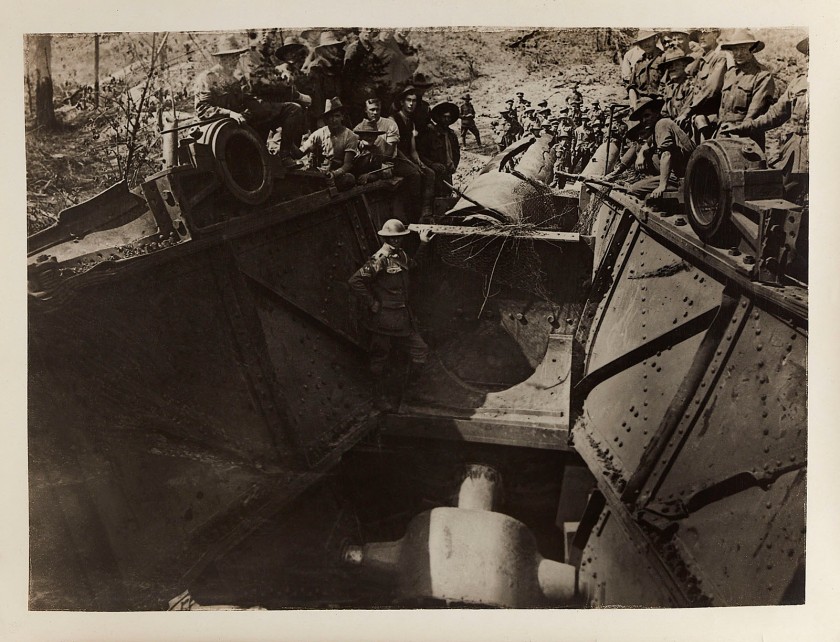


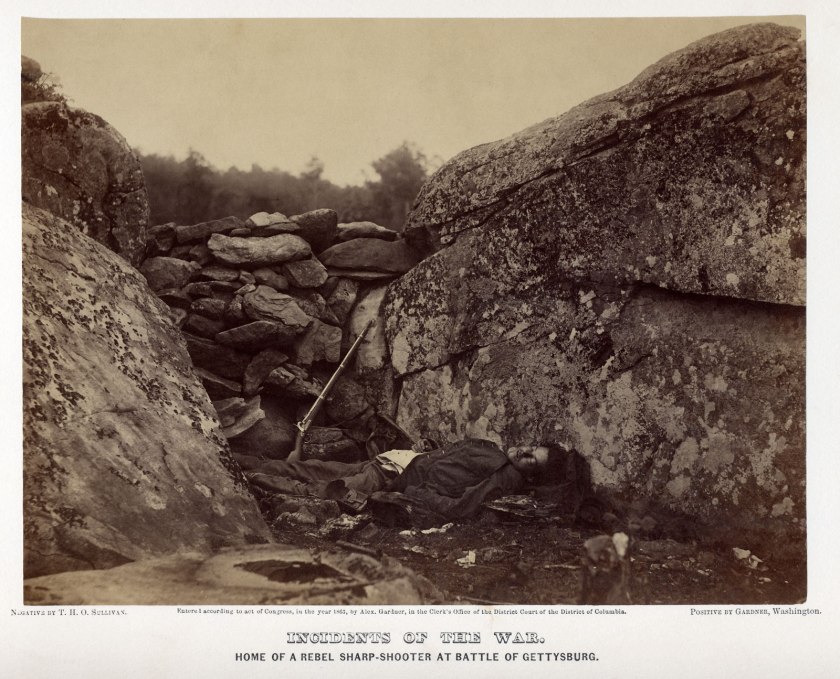

![Alexander Gardner (1821-1882) '[Gettysburg, Pennsylvania. Dead Confederate sharpshooter in "The devil's den."]' July 1863 Alexander Gardner (1821-1882) '[Gettysburg, Pennsylvania. Dead Confederate sharpshooter in "The devil's den."]' July 1863](https://artblart.files.wordpress.com/2013/04/gardner-sharpshooter-web.jpg?w=840)























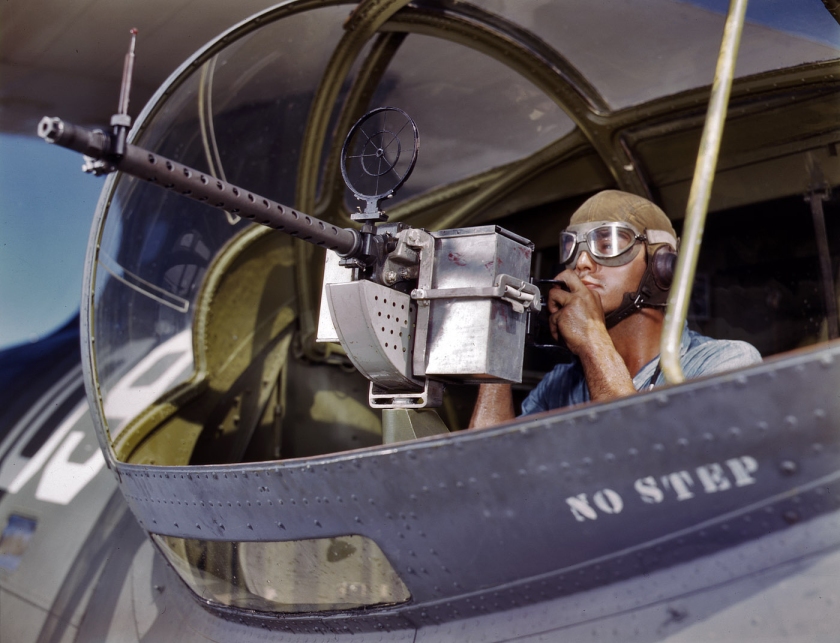




![Alexander Gardner (1821-1882) '[Gettysburg, Pennsylvania. Dead Confederate sharpshooter in "The devil's den."]' July 1863 Alexander Gardner (1821-1882) '[Gettysburg, Pennsylvania. Dead Confederate sharpshooter in "The devil's den."]' July 1863](https://artblart.files.wordpress.com/2013/04/gardner-sharpshooter-web.jpg?w=840&h=678)
![Alexander Gardner (1821-1882) '[Antietam, Md. President Lincoln with Gen. George B. McClellan and group of officers]' 3rd October 1862 Alexander Gardner (1821-1882) '[Antietam, Md. President Lincoln with Gen. George B. McClellan and group of officers]' 3rd October 1862](https://artblart.files.wordpress.com/2013/04/abraham-lincoln-and-generals-web.jpg?w=840&h=673)
![Alexander Gardner (1821-1882) '[Antietam, Md. President Lincoln with Gen. George B. McClellan and group of officers]' (detail) 3rd October 1862 Alexander Gardner (1821-1882) '[Antietam, Md. President Lincoln with Gen. George B. McClellan and group of officers]' (detail) 3rd October 1862](https://artblart.files.wordpress.com/2013/04/abraham-lincoln-and-generals-detail.jpg?w=840&h=972)

![Timothy H. O'Sullivan (1840-1882). '[Fort Pulaski, Ga. The "Beauregard" gun]' April 1862 Timothy H. O'Sullivan (1840-1882). '[Fort Pulaski, Ga. The "Beauregard" gun]' April 1862](https://artblart.files.wordpress.com/2013/04/big-gun-web.jpg?w=840&h=870)
![Alexander Gardner (1821-1882). '[Richmond, Va. Grave of Gen. J. E. B. Stuart in Hollywood Cemetery, with temporary marker]' Richmond, April-June 1865 Alexander Gardner (1821-1882). '[Richmond, Va. Grave of Gen. J. E. B. Stuart in Hollywood Cemetery, with temporary marker]' Richmond, April-June 1865](https://artblart.files.wordpress.com/2013/04/general-stuart-web.jpg?w=840&h=822)
![James F. Gibson. '[James River, Va. Deck and turret of U.S.S. Monitor seen from the bow (ie. stern)]' 9th July, 1862 James F. Gibson. '[James River, Va. Deck and turret of U.S.S. Monitor seen from the bow (ie. stern)]' 9th July, 1862](https://artblart.files.wordpress.com/2013/04/james-river-va-deck-and-turret-of-uss-monitor-seen-from-the-bow-web.jpg?w=840&h=838)

![Alexander Gardner (1821-1882) '[Washington Navy Yard, D.C. Lewis Payne, the conspirator who attacked Secretary Seward, standing in overcoat and hat]' April 1865 Alexander Gardner (1821-1882) '[Washington Navy Yard, D.C. Lewis Payne, the conspirator who attacked Secretary Seward, standing in overcoat and hat]' April 1865](https://artblart.files.wordpress.com/2013/04/payne-a-web1.jpg?w=834&h=1024)

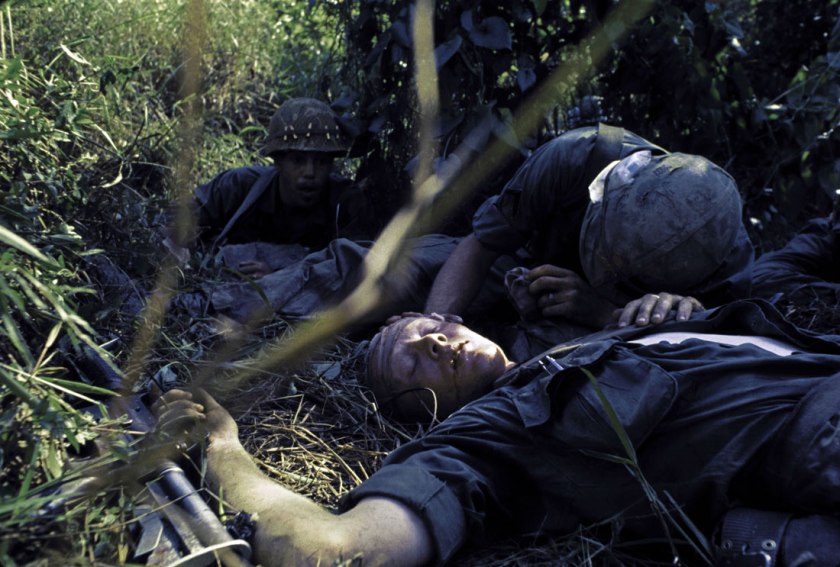
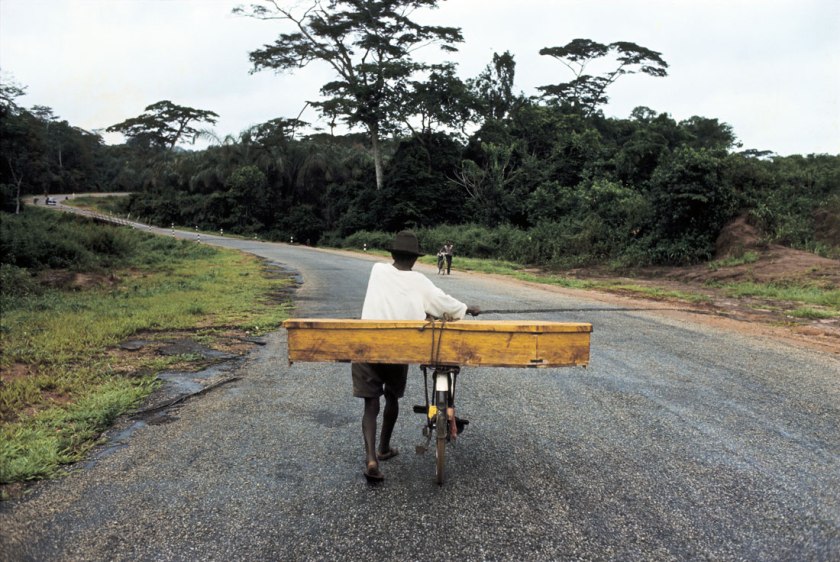

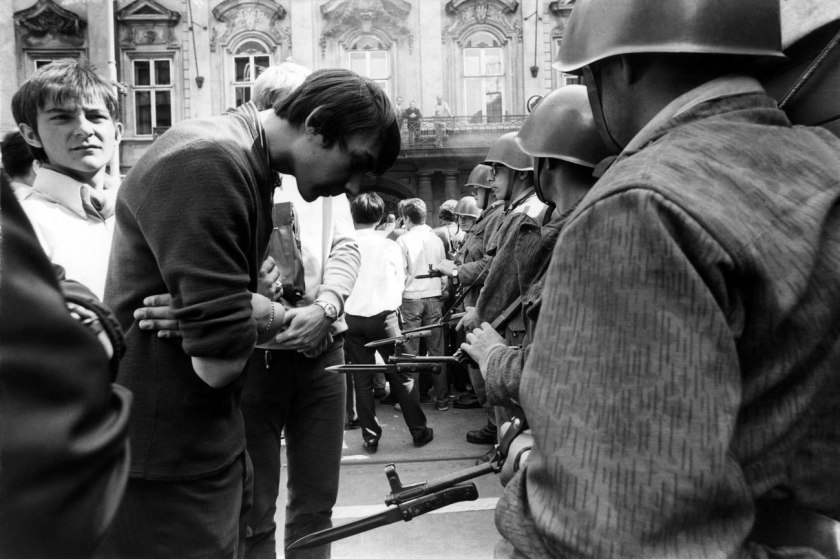



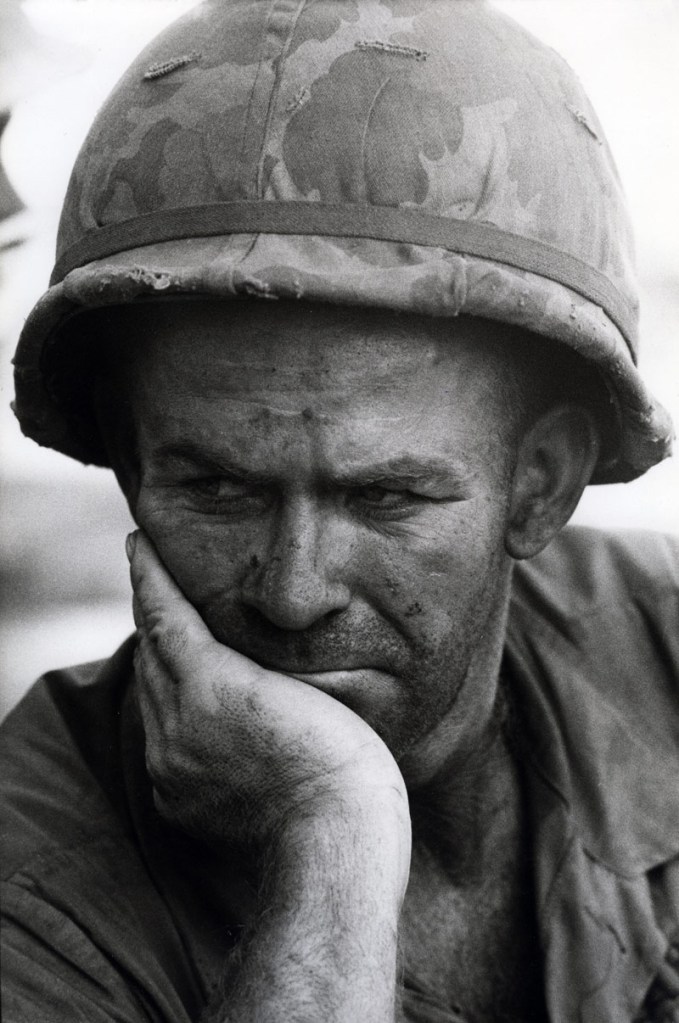
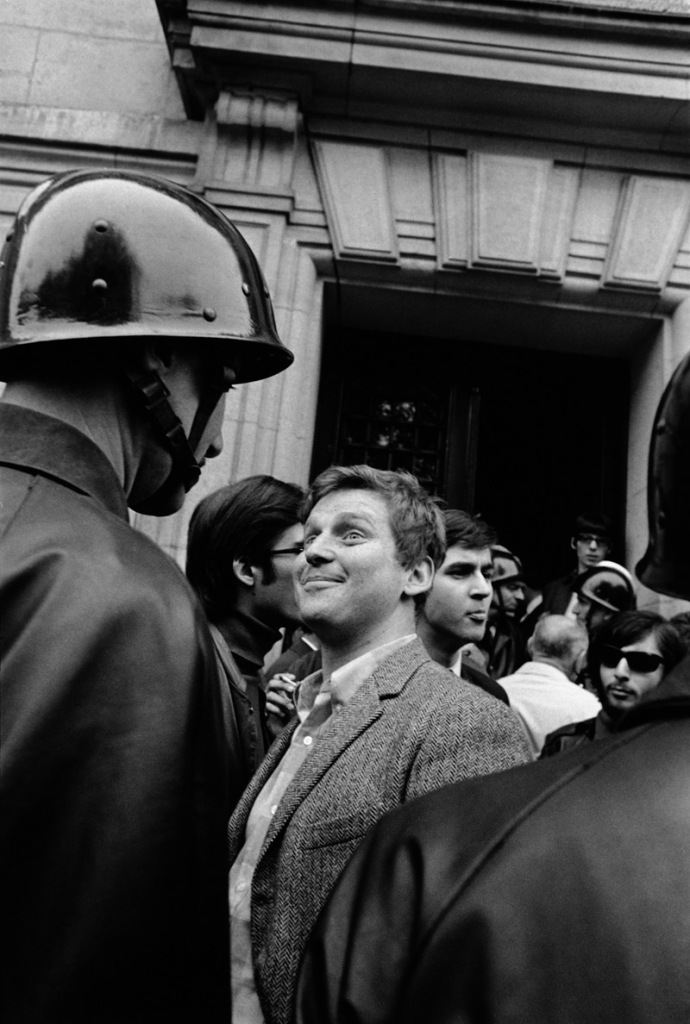














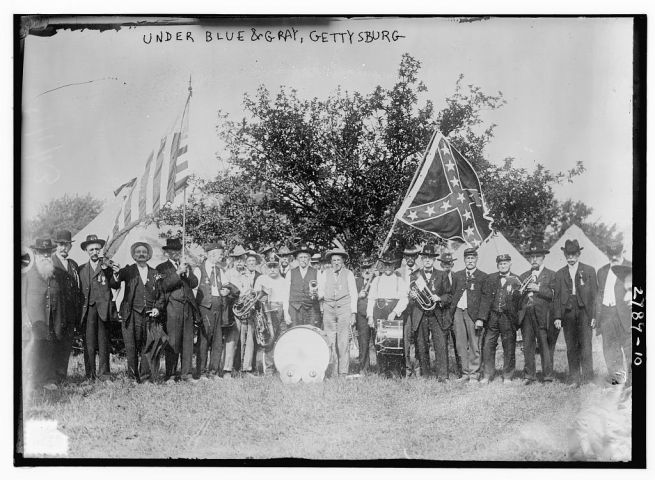
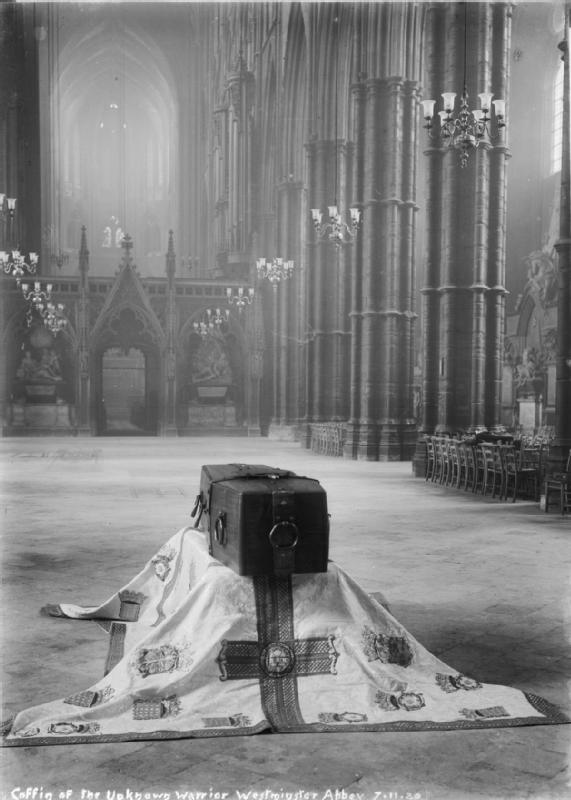

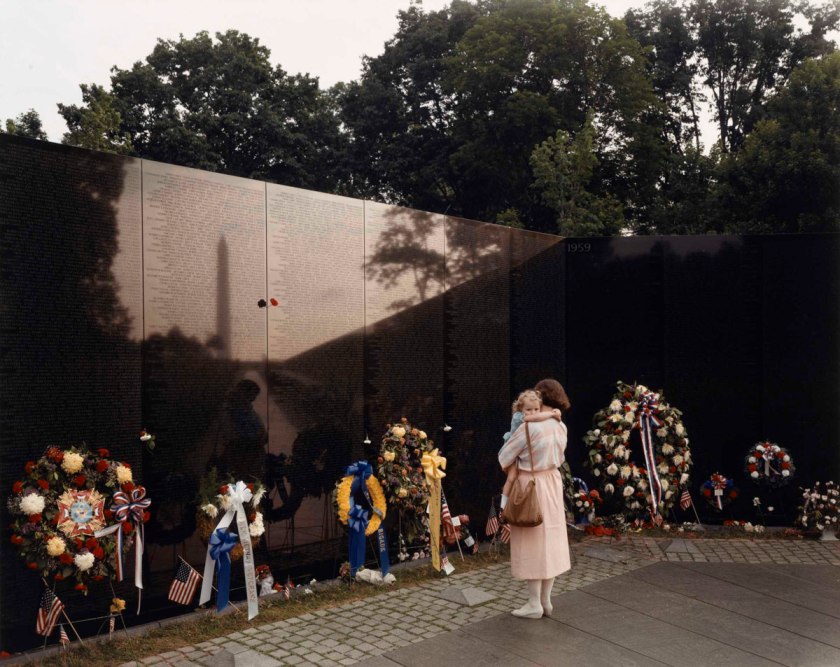
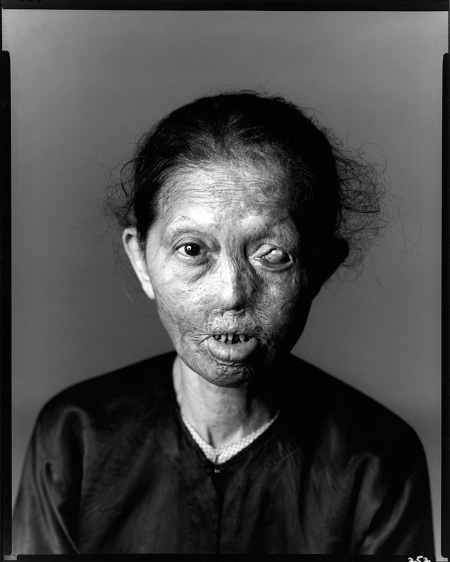
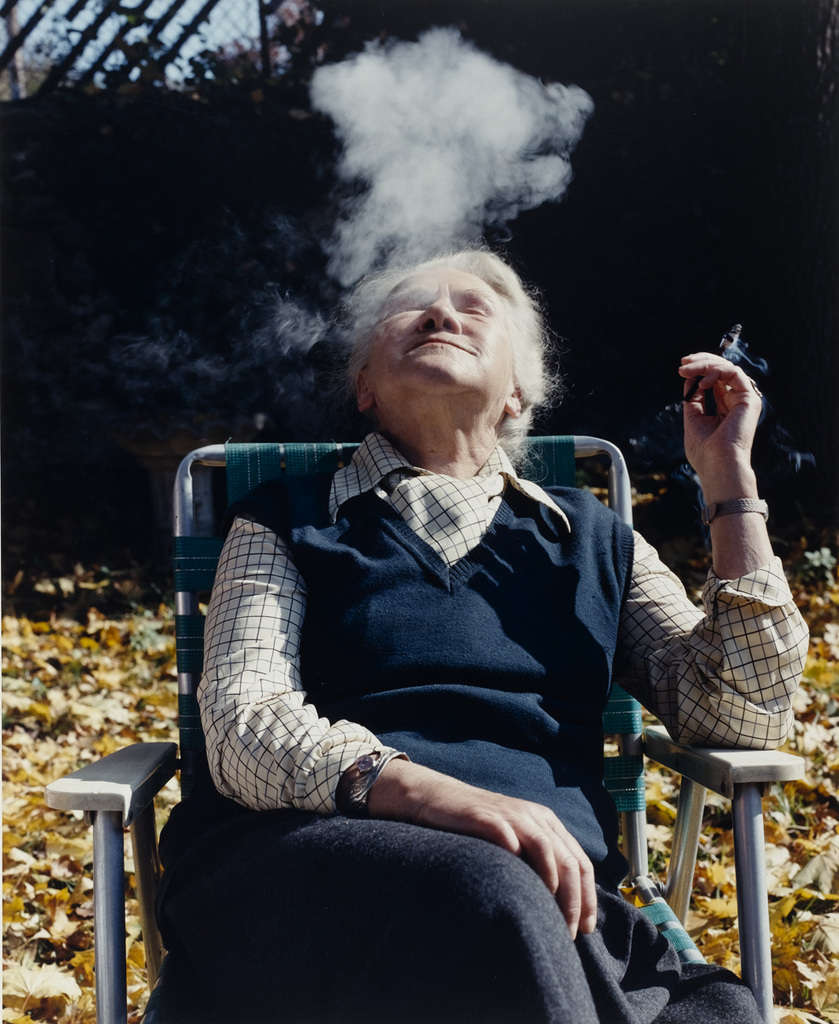

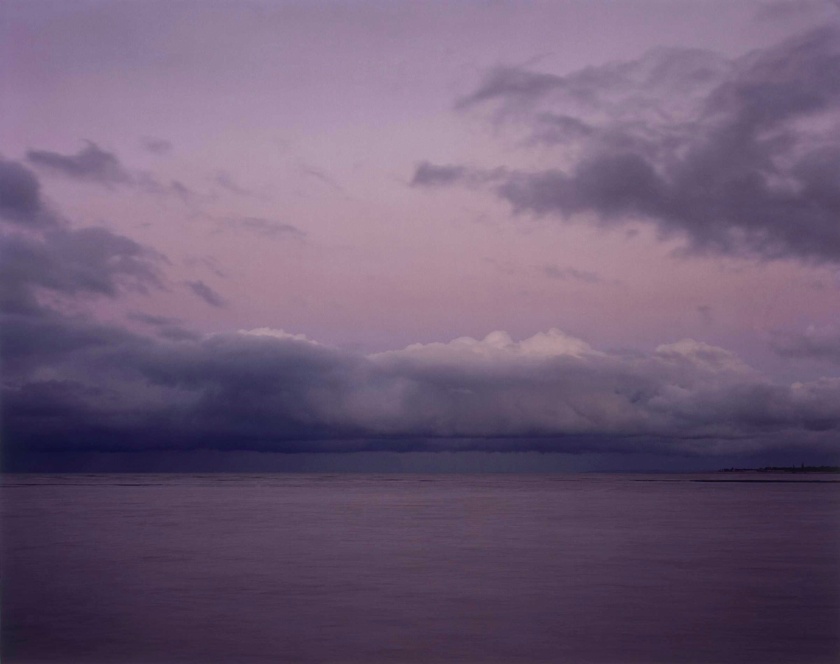
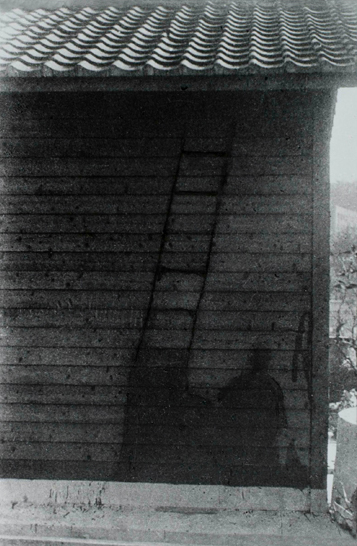
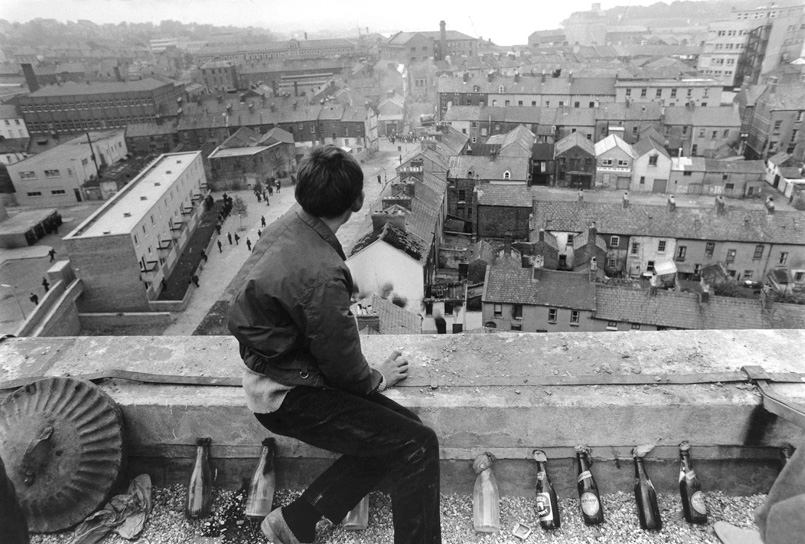

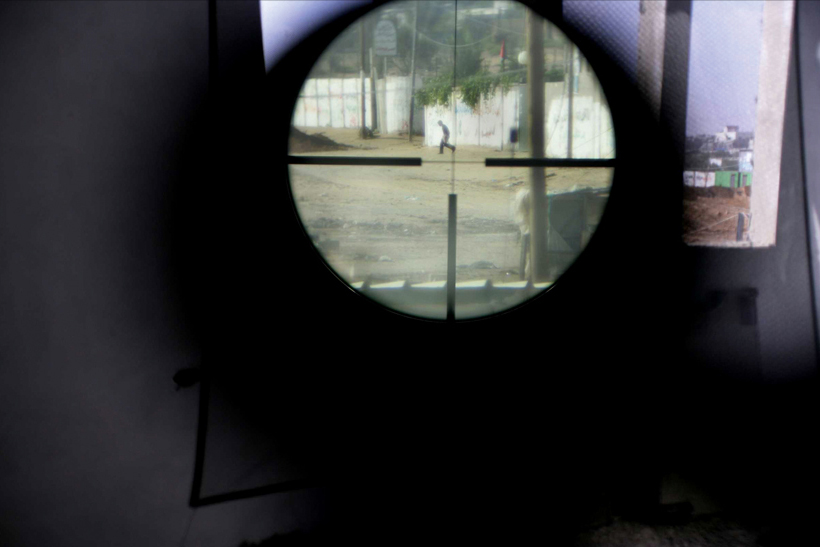
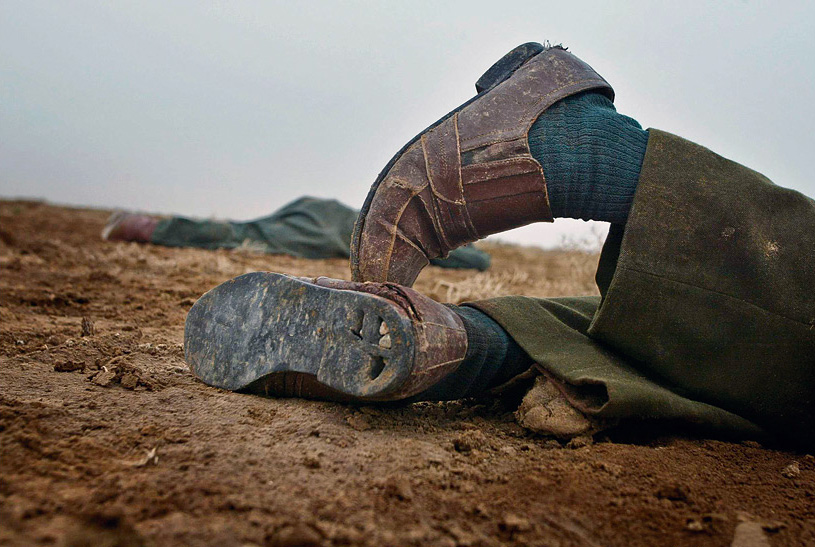






You must be logged in to post a comment.